WHM has the ability (if you are a root user) to back up the server and accounts to an SSH destination. By default, WHM will also always use the /backup (or other directory you set) to store the backups locally first. Because this consumes storage on the server, we recommend looking at a more flexible option such as JetBackup as opposed to the built in WHM backup option. Read more here: https://www.veerotech.net/kb/setting-up-ftp-ssh-storage-for-use-with-jetbackup-jetbackup-ssh-storage/
First, we’ll need to create a user on our Storage VPS server for the WHM Backup to connect using. We’ll create a new user of “whmbackups” with a password of “TgdferG%cnSD34”.
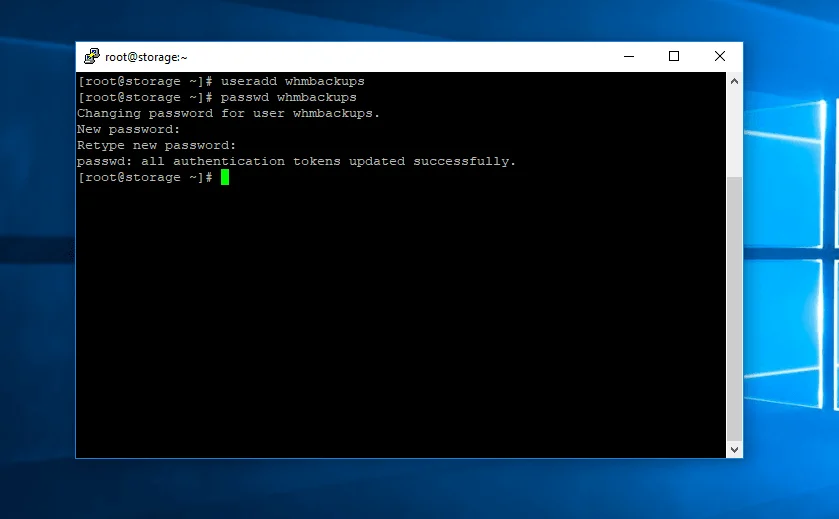
After creating a user on our Storage VPS, we’ll want to navigate to the home directory for the user and create a new directory, then assign a proper user/group to the directory.
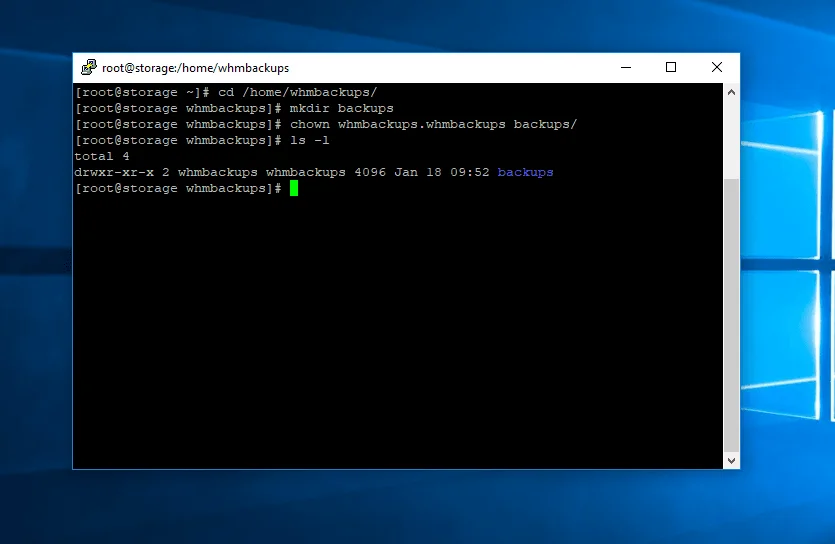
Because we’re logged in as the root user, when we create the new directory it will automatically have an owner & group of root. This must be changed to have an owner & group of the user account we created.
Moving forward, we’ll need to first ensure that the WHM Backup Configuration option is enabled by checking the box to “Enable Backups”.
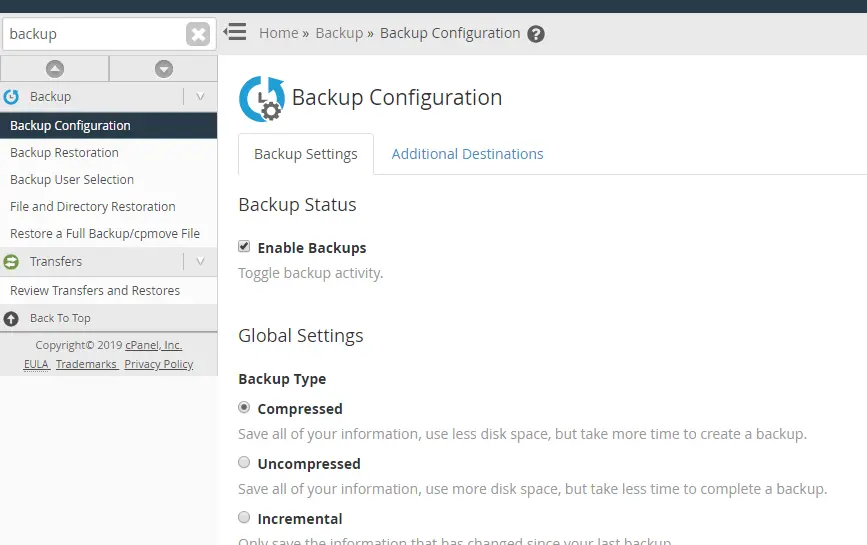
For more information on the initial setup of the WHM Backup Configuration, please refer to the cPanel documentation here: https://documentation.cpanel.net/display/76Docs/Backup+Configuration
After ensuring the “Enable Backups” option is checked, navigate to the “Additional Destinations” tab. From the drop down menu choose “SFTP” and click “Create New Destination” next to it. Now we can begin to enter our connection information & settings for pushing the backups to our Storage VPS.
We will use the following configuration in this guide:
- Destination Name: StorageVPS
- Transfer System Backups: Yes, checked
- Backup Directory: backups (we created this previously on our Storage VPS)
- Remote Host: IP of your Storage VPS
- Port: 22 (default unless you have changed the port)
- Remote Account Username: whmbackups (we previously created this user account)
- Authentication Type: Password (we will use password authentication for ease of use in this guide)
- Remote Password: password for the user whmbackups that we previously created
- Timeout: 30 (we can leave the default of 30)
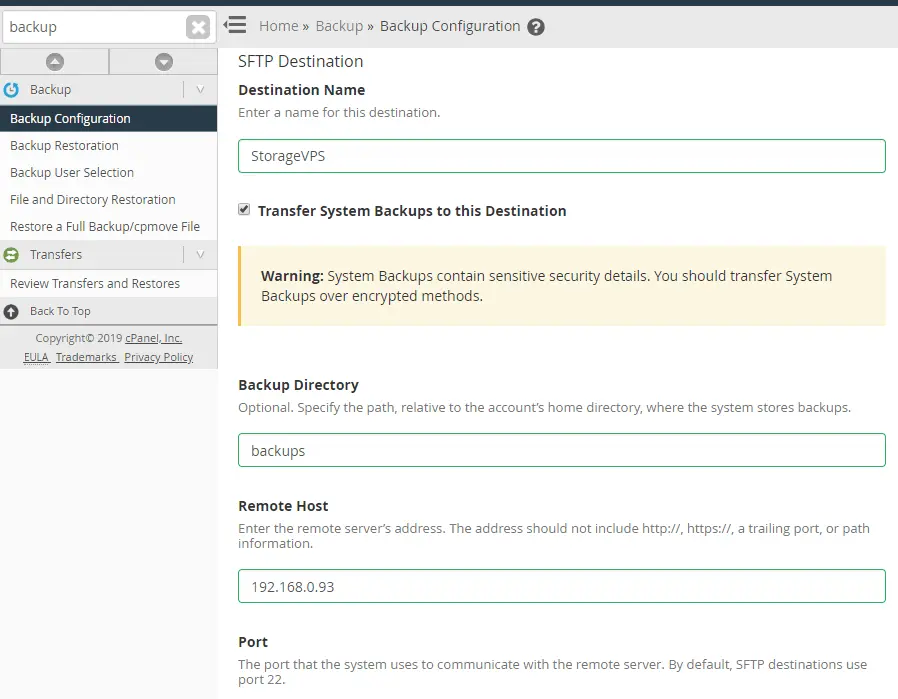
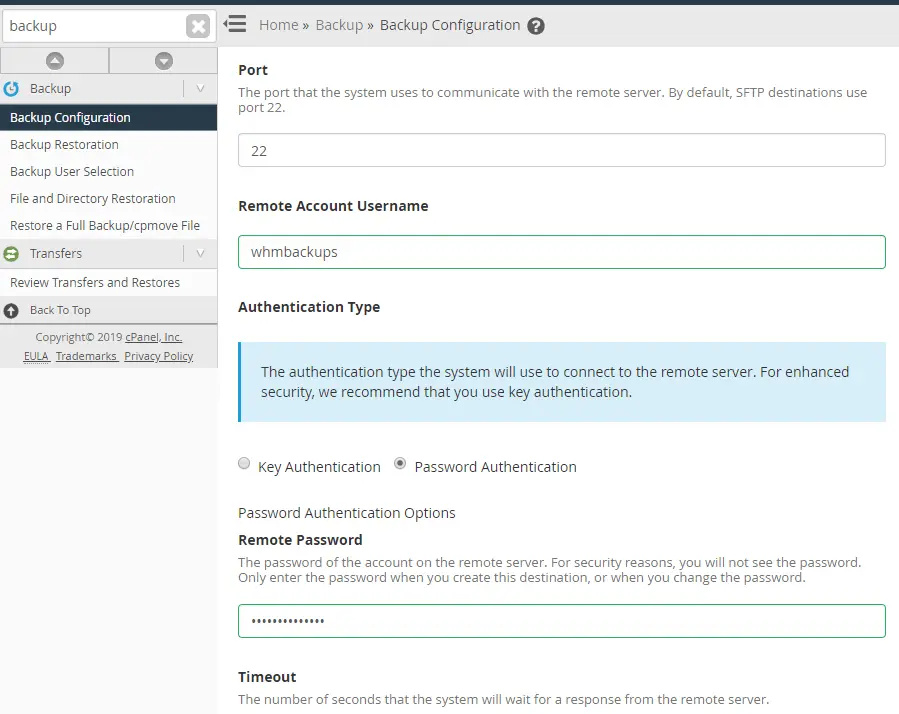

Once you’ve completed all of the fields with the connection information, click “Save and Validate Destination” at the bottom of the page. If the information was valid, you will see what is shown on the image below.

Additionally, once back on the Destinations page, you can also click the tab labeled “Validation Results” which will show the details of the previous validations.
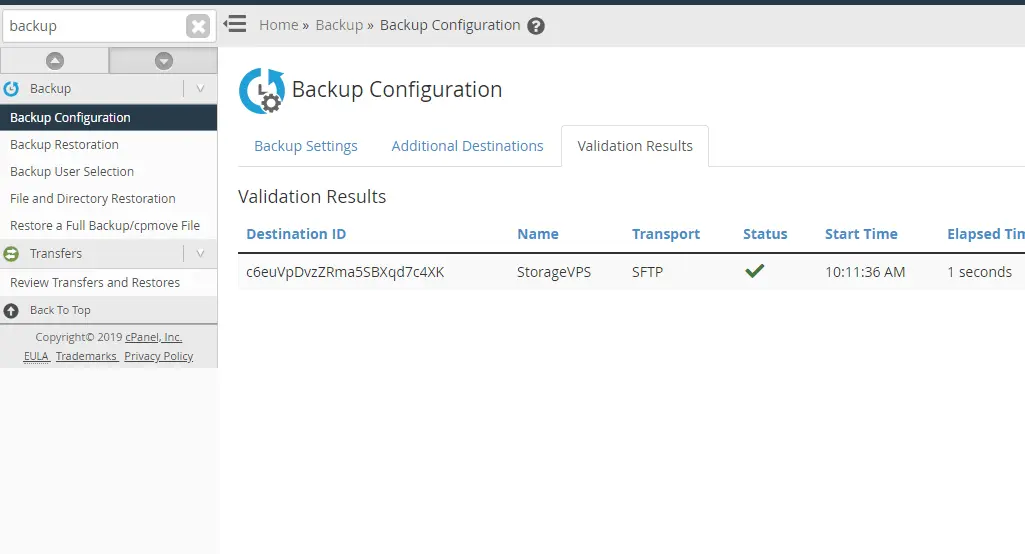
Now that we have added the Storage VPS as the destination, you can use this destination for storing the backups after they’ve been generated. You’ll need to consult the cPanel documentation for the configuration of the backup job and its associated options. We do however, recommend using an application such as JetBackup which is more flexible than the built in WHM Backup options.
cPanel WHM Documentation: https://documentation.cpanel.net/display/76Docs/Backup+Configuration
Storage VPS Hosting: https://www.veerotech.net/storage-vps

If you have any web hosting questions please feel free to reach out to us. We're happy to help.
